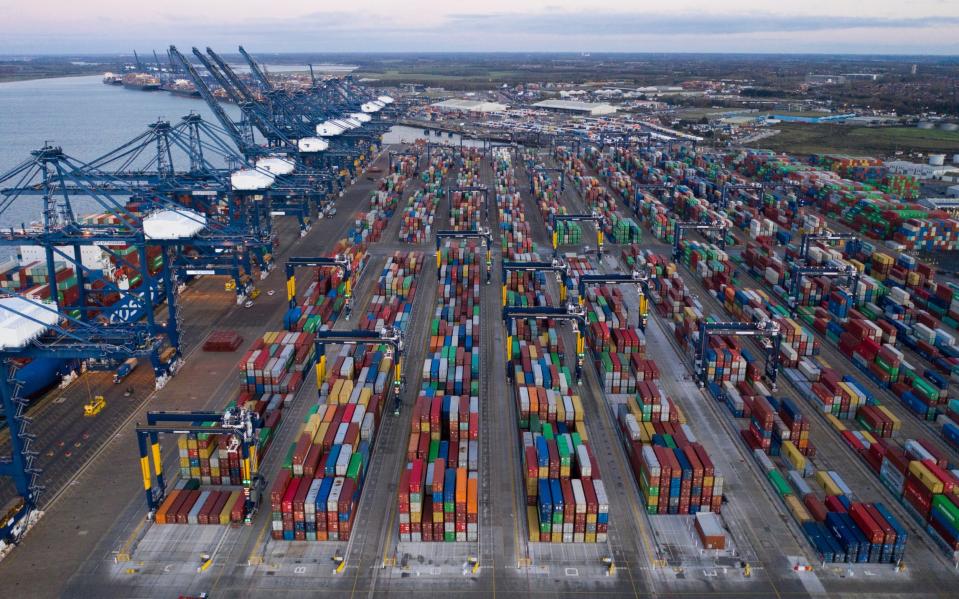‘Critical’ sea freight congestion keeps prices high

As the world grapples with inflation, pandemic-inflated global freight prices are stubbornly refusing to return to normal.
The typical spot price paid by importers to move a 40-foot container from East Asia to Europe is around $10,000, down a third since January.
Yet that is almost six times higher than the pre-pandemic costs of moving goods around the world by sea — a process integral to the globalisation of recent decades.
After extraordinary disruption last year that caused global freight prices to soar, subsequent downward pressures seem to have lost steam. It has left importers wondering how long they will be paying sky-high rates, which are also driving up costs in the UK.
Fortunately, there are signs the industry is experiencing some level of much-needed cooldown.
China’s lockdown woes have been a crucial factor in the falls so far. The country’s repeated restrictions caused severe disruption over recent months, which artificially cooled the shipping market and freight prices. As many factories in key hubs such as Shanghai curbed production, the knock-on effect was lower demand for freight capacity.
While port volumes picked up again once restrictions eased, taking China’s trade surplus to a record high of $98bn (£83bn) in June, they may now be showing signs of a downturn.
Supply chain consultant FourKites estimates volumes at Shanghai are roughly back at pre-lockdown levels, having been briefly higher since late June. Volumes in other key ports such as Shenzhen and Ningbo-Zhoushan have also fallen in recent days — albeit from elevated levels. The more this pressure eases and shorter journeys free up vessels at a quicker rate, the more freight prices should drop.
Drewry, the supply chain advisory, has told clients prices are likely to fall in the coming weeks, estimating congestion at North American ports has halved — from twenty times the norm to just 10 times. The quickest journeys from east Asia to America’s west coast have shortened from 34 days, in January, to around 20.
It is a slow progress and will take months to complete, but a thawing the industry desperately needs.
There are still plenty of problems, with Europe now in the eye of the storm as industrial action rises following the pandemic. In ports such as Rotterdam, Europe’s largest, delays and strikes have led to huge pile-ups of export containers and forced ships into lengthy waits for docking space.
Earlier this month, shipping giant Maersk warned clients that congestion was at “continuously critical levels”, saying it would clear containers to “off-dock facilities” if they are not promptly collected. Rival Hapag-Lloyd has imposed blanket congestion surcharges, in an effort to prompt collection and delivery of containers.
“It's not just kind of how quickly the ships can arrive [and] how quickly they can be unloaded,” says Judah Levine from freight booking platform Freightos. “There's a whole bunch of other inland factors to what's keeping that congestion a problem as well.”
Germany’s IfW economic institute estimates 2pc of global freight capacity is currently stuck in the North Sea.
These pressures are being exacerbated by a drought in parts of Europe. Water levels are so low at a key choke point on the Rhine, the river which acts as a lifeline for swathes of German industry, that barges are having to cut their loads to lighten up. “Intakes have already dropped significantly to basically all Rhine destinations,” says Jelle Vreeman, a shipbroker at Riverlake in the Netherlands.
Every problem has a domino effect that reveals how vulnerable the system has become. Where distributed production systems were once a strength of the globalised system, they have become an albatross for many companies.
But external pressures may be easing. US researchers at the University of Colorado say logistics growth is finally losing pace after a post-pandemic boom. By their measure, expansion in the sector has fallen below the all-time average for the first time since July 2020.
“We are also seeing a different type of growth now than we were previously,” they said in a report published this month. While demand for warehousing and transportation had been booming, now “the opposite” is true – inventories are building.
Recession fears are rife, particularly in Europe, as the pent-up demand of the end of lockdown gives way to a state of stagflation: weak growth and rapidly-rising prices.
Fearing continued disruptions, many companies made unusually large orders. Those are finally beginning to arrive, just as demand slows. In many instances, that has led to accidental stockpiling and goods being left at ports because the warehouse they were destined for is full.
If importers cut orders in response, that could then further ease the pressure on freight prices.
Yet it isn’t just importers who may have been over-eager. Shipping companies took advantage of the money made from soaring rates to put in bumper orders for vessels. Much of that new capacity will arrive next year, when booming trade activity may have quietened. Oversupply and easing demand are a recipe for the situation to improve — a potential relief for British households.
“I would expect the rates to soften quite significantly in the light of what could easily be a recession in the UK,” says James Hookham from the Global Shippers Forum, a trade body for cargo owners.
“Hopefully that won't be a spectacular implosion, because no one wants that degree of chaos in the industry again.”
As the West prepares for its busiest economic period, bosses will be hoping nothing else causes prices to rocket again.
